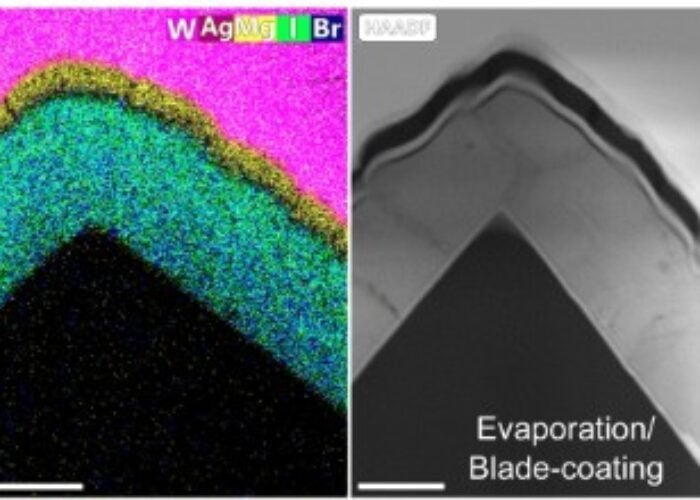Few outside of the energy industry will have heard of the term ‘Peak Load’.
In its simplest form, Peak Load refers to the period of maximum demand for electricity. In the Kingdom of Saudi Arabia – where it isn’t uncommon for summer temperatures to reach 50⁰ Celsius – this period tends to span the months of May and September, when air conditioning use it also at its highest. Unsurprisingly, according to the 2014 annual report from the Kingdom’s Electricity and Cogeneration Regulatory Authority (ECRA), the highest consumption of electricity on an average day is between noon and 4pm clearly reflecting the strain that cooling systems place on the national grid.
Unlock unlimited access for 12 whole months of distinctive global analysis
Photovoltaics International is now included.
- Regular insight and analysis of the industry’s biggest developments
- In-depth interviews with the industry’s leading figures
- Unlimited digital access to the PV Tech Power journal catalogue
- Unlimited digital access to the Photovoltaics International journal catalogue
- Access to more than 1,000 technical papers
- Discounts on Solar Media’s portfolio of events, in-person and virtual
While the average consumer simply turns up the air conditioning on a hot summer day, most are unaware of the fact that Peak Load power generation assets are specifically employed to ensure that the national electricity grid is not destabilised by additional power consumption by millions of consumers around the country. In fact, according to ECRA, summer Peaks Loads in Saudi Arabia increased by 6.7% from 2013 to 2014 alone.
The natural response, and one that is evident from the significant investment in capacity, is to deploy additional power generation assets – ECRA expects Peak Load capacities in the Kingdom to more than double from 35GW in 2007 to a projected, 75GW in 2020. And, as a reliable and cost competitive power generation asset, this is where photovoltaic (PV) solar can play a critical role in meeting the Kingdom’s energy needs.
In the context of a well-defined understanding of the country’s Peak Loads and consumption trends, solar electricity is the ideal response to a significant portion of Saudi Arabia’s Peak Load. For starters, the daily Peak, from noon to 4pm, coincides with the time that the sun is at its zenith and PV systems – particularly those mounted on tracking systems – are at their most productive.
Second, tremendous improvements in PV module technology translates into more energy being harvested from sunlight. For instance, thanks to the single highest investment in Research and Development, First Solar is able to deliver PV modules that are 16.3% efficient, while working to translate its record-breaking test cell (21.5%) and module (18.2%) efficiencies into production line solar panels. Additionally, its high performance thin film modules are proven to deliver more energy in hot, humid and dusty conditions, which are the norm in Saudi Arabia, with zero water use.

Third, although land is not in short supply in the Kingdom, it would require approximately 398 square kilometers to match the country’s existing 65GW of conventional power generation capacity with high performance thin film solar PV. In other words you would need an area roughly one quarter of the size of Riyadh, or about 0.01% of Saudi Arabia’s total area, to meet the country’s energy needs with clean, affordable solar electricity.
And finally, solar energy has clearly reached its economic tipping point. According to independent analysis from Lazard, the global unsubsidised average Levelised Cost of Electricity (LCOE) for utility-scale thin film solar PV is fully cost competitive with unsubsidised conventional generation, including diesel, nuclear, gas combined cycle and natural gas. In the Middle East, where subsidies continue to play a role in keeping the price of conventional fuels low, solar is also competitive on an unsubsidised basis and the clearest example is Dubai’s 200MW utility-scale PV power plant (powered by First Solar’s modules) priced at an unsubsidised tariff of US$0.058 per kWh. These numbers, and the promise of further declines in cost, demonstrate why thin film solar is the technology of choice for countries looking to secure and balance their energy portfolios.
While solar’s detractors will point to its intermittent nature and the cost implications of storage technologies, the fact is that the sun is guaranteed to rise and set each day. What’s more is that Saudi Arabia can use its sheer size to its advantage: the sun rises and sets at least 30 minutes later in Jeddah in the West than it does in Dammam, in the East. With careful planning and geographical distribution of its solar assets, the Kingdom can leverage this time difference to optimise and extend its generation of solar electricity to cover early morning and evening loads.
Even displacing just 10% of the Kingdom’s Peak Load capacity with solar PV would free up approximately 2GW of conventional generation assets, allowing them to support the ever-growing need for Base Load capacity without the need for additional investment in expensive hydrocarbon-burning generators.
The bottom line is that solar PV should no longer be treated as an experiment but rather as a mature technology that is fully capable of standing shoulder-to-shoulder with conventional generation in addressing one of Saudi Arabia’s most pressing energy needs.
The evidence all points to the fact that the time for solar energy in the Kingdom, is now.
Osama Al Othman is First Solar’s Director of Business Development for the Kingdom of Saudi Arabia. With over 10GW installed worldwide, First Solar is a leading global provider of solar energy solutions.







